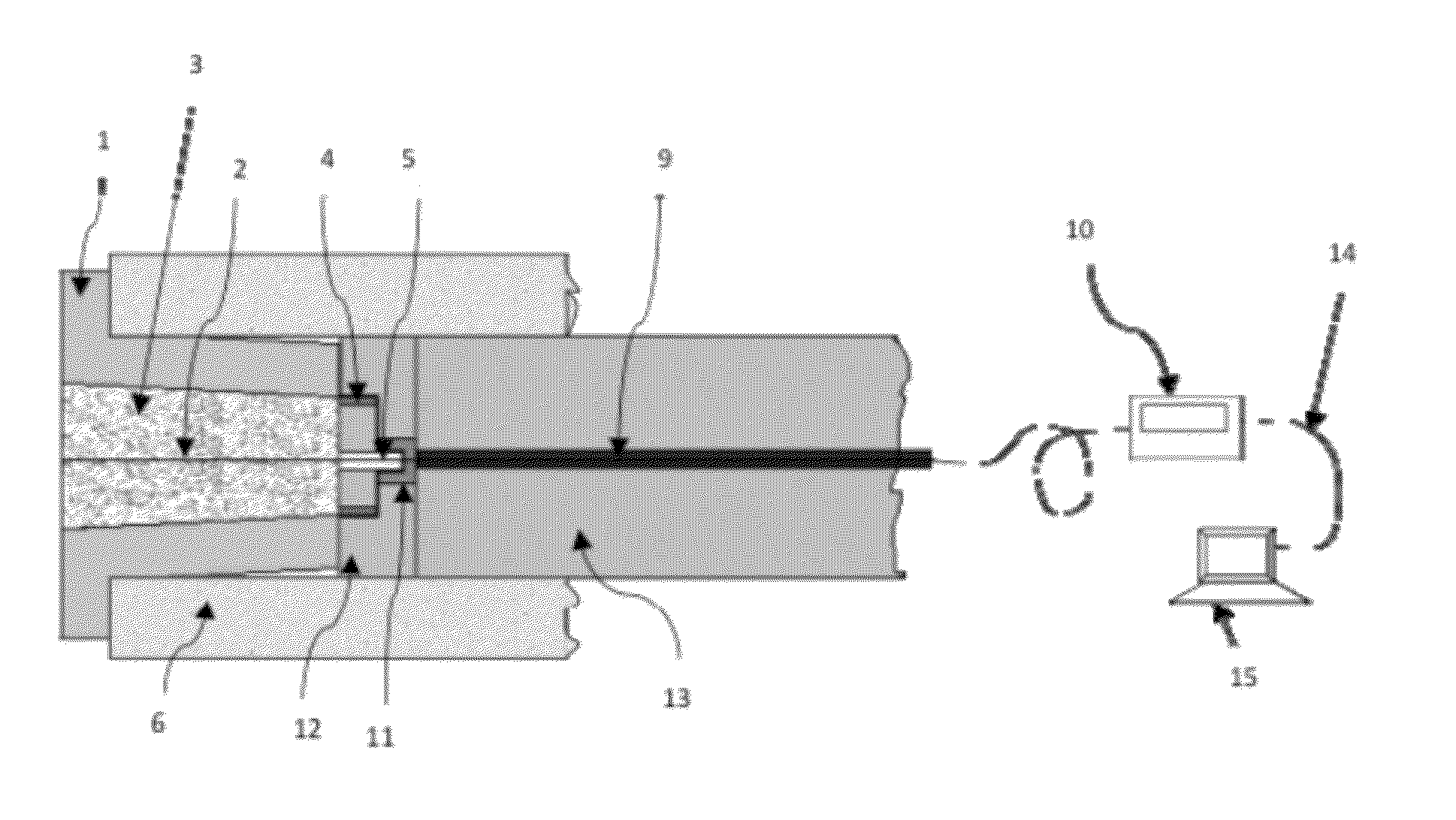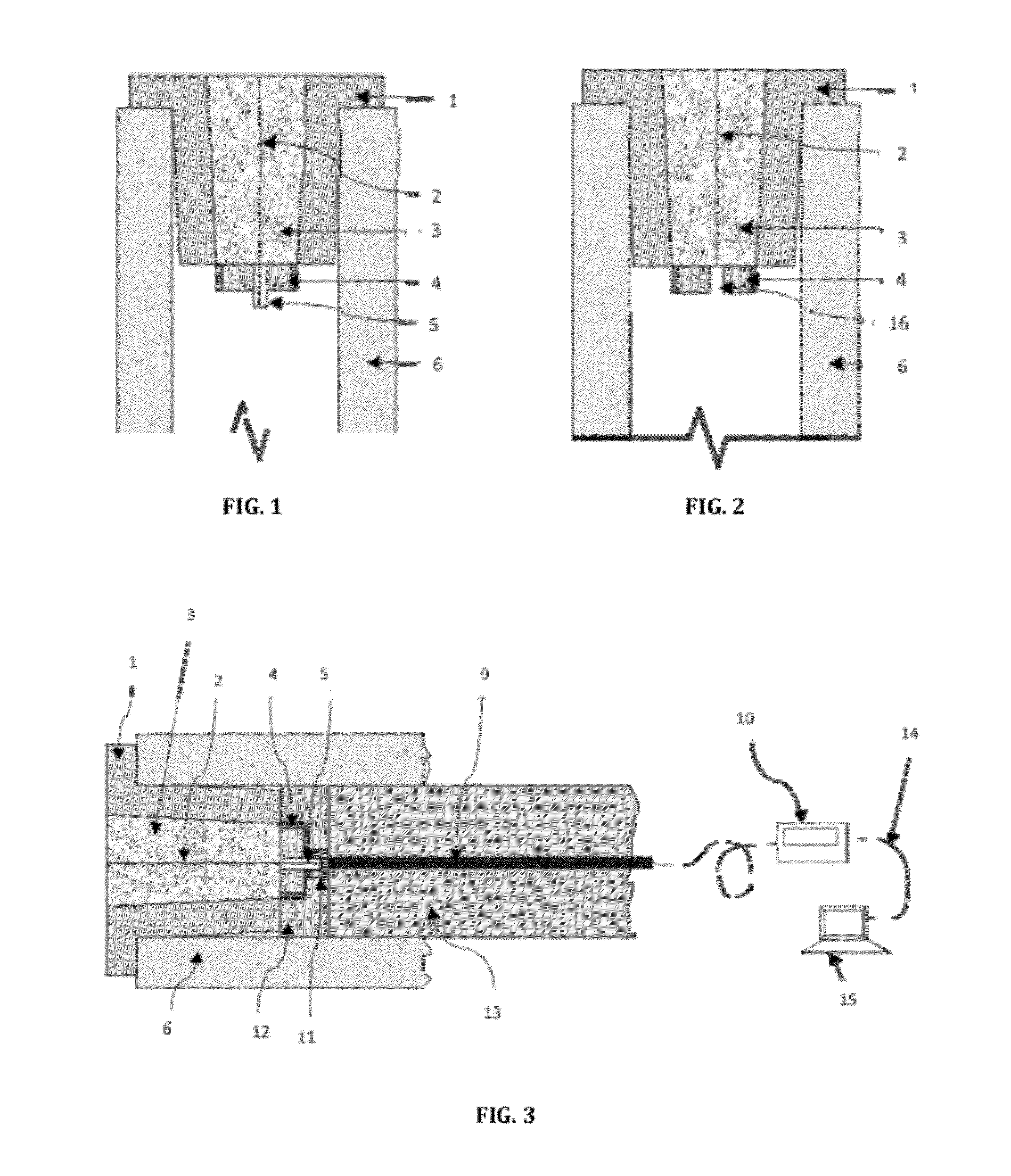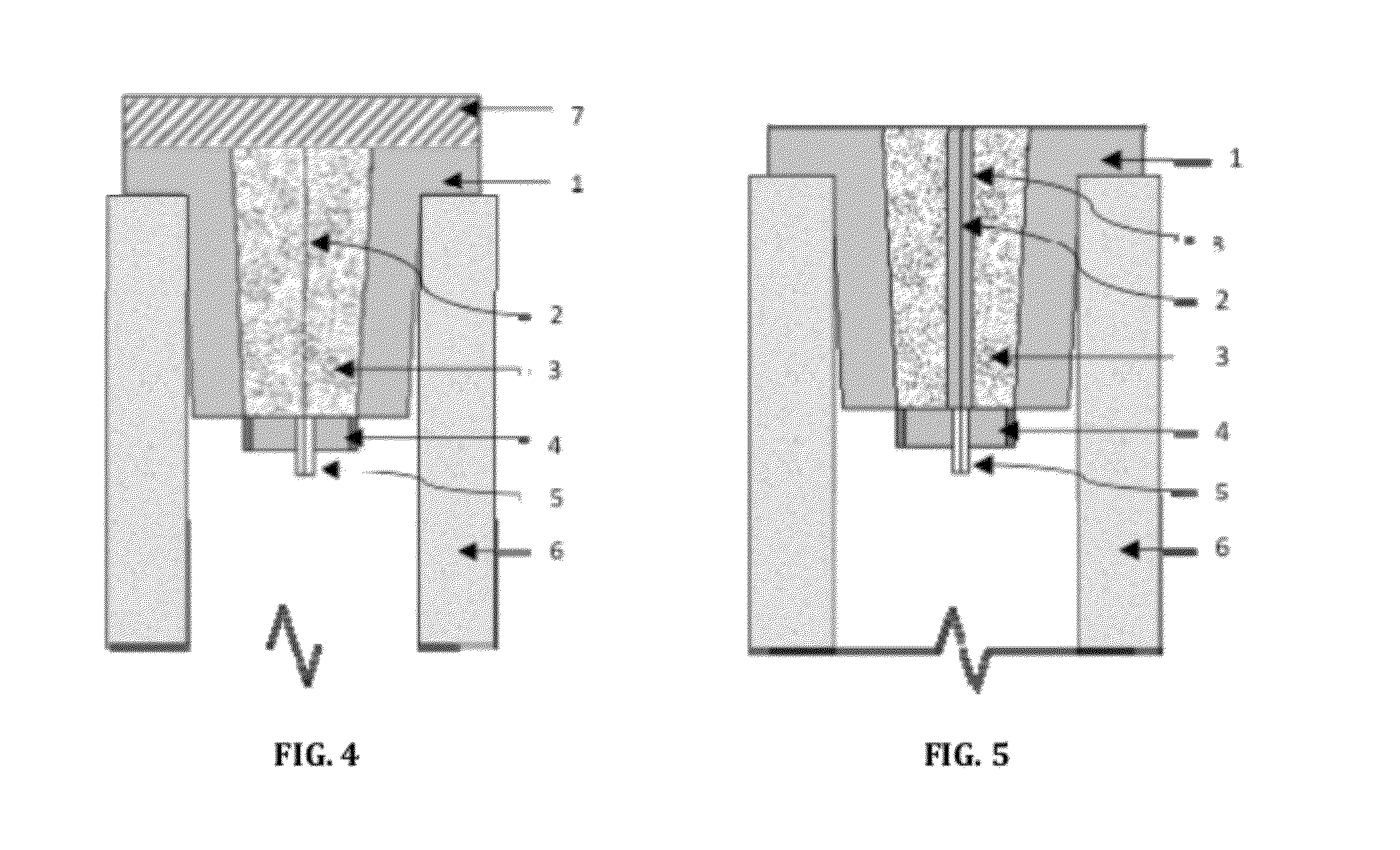Immersion type sensor for measuring temperature
a technology of immersion-type sensors and temperature, which is applied in the direction of thermometers, radiation pyrometry, instruments, etc., can solve the problems of difficult quantification and elimination, inability to meet the requirements of several applications, so as to improve emissivity and prolong the residence time in molten metal
- Summary
- Abstract
- Description
- Claims
- Application Information
AI Technical Summary
Benefits of technology
Problems solved by technology
Method used
Image
Examples
example
Measurement of Molten Temperature Involving the System of the Present Invention
[0078]For the purposes of measurement of the molten metal temperature the immersion type sensor for measurement of temperatures of molten metal in accordance with the present invention was used.
[0079]For the purposes of measurement the following steps were followed:
[0080]immersing the probe receptacle having an optical fiber into the molten metal;[0081]a. b. collecting the optical signals including emitted radiations from the molten metal via the optical fiber housed in the probe receptacle;[0082]b. directing the optical signal towards the detector module and carrying out processing of the optical signal in said detector module to measure the temperature of molten metal involving the combination of two color pyrometry and multi-color pyrometry.
[0083]A comparative molten metal temperature measurement was studied following the method involving the system of the invention as above with respect to related dat...
PUM
 Login to View More
Login to View More Abstract
Description
Claims
Application Information
 Login to View More
Login to View More - R&D
- Intellectual Property
- Life Sciences
- Materials
- Tech Scout
- Unparalleled Data Quality
- Higher Quality Content
- 60% Fewer Hallucinations
Browse by: Latest US Patents, China's latest patents, Technical Efficacy Thesaurus, Application Domain, Technology Topic, Popular Technical Reports.
© 2025 PatSnap. All rights reserved.Legal|Privacy policy|Modern Slavery Act Transparency Statement|Sitemap|About US| Contact US: help@patsnap.com



